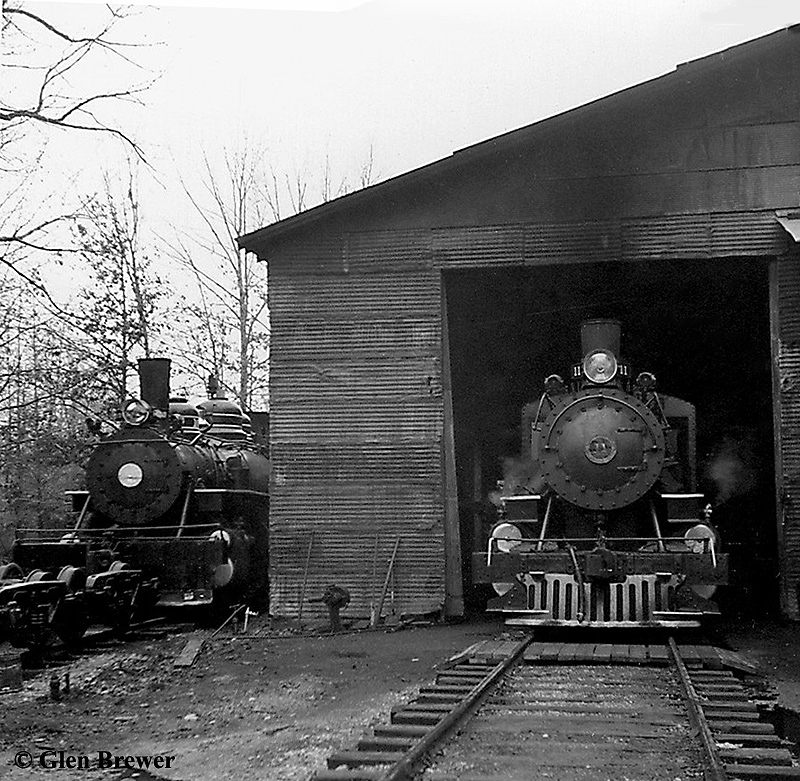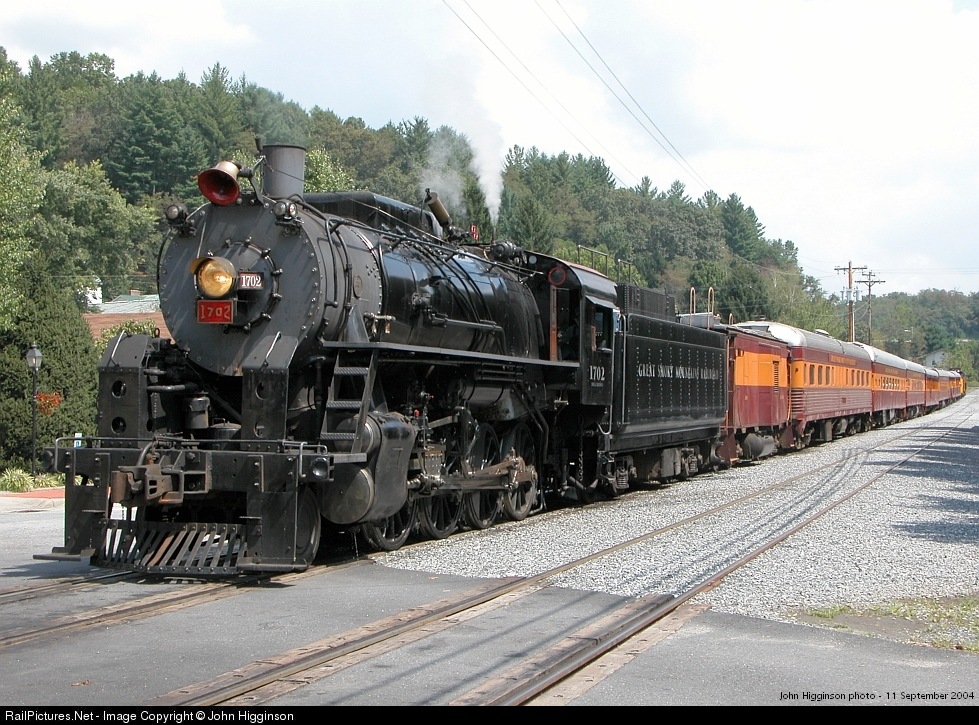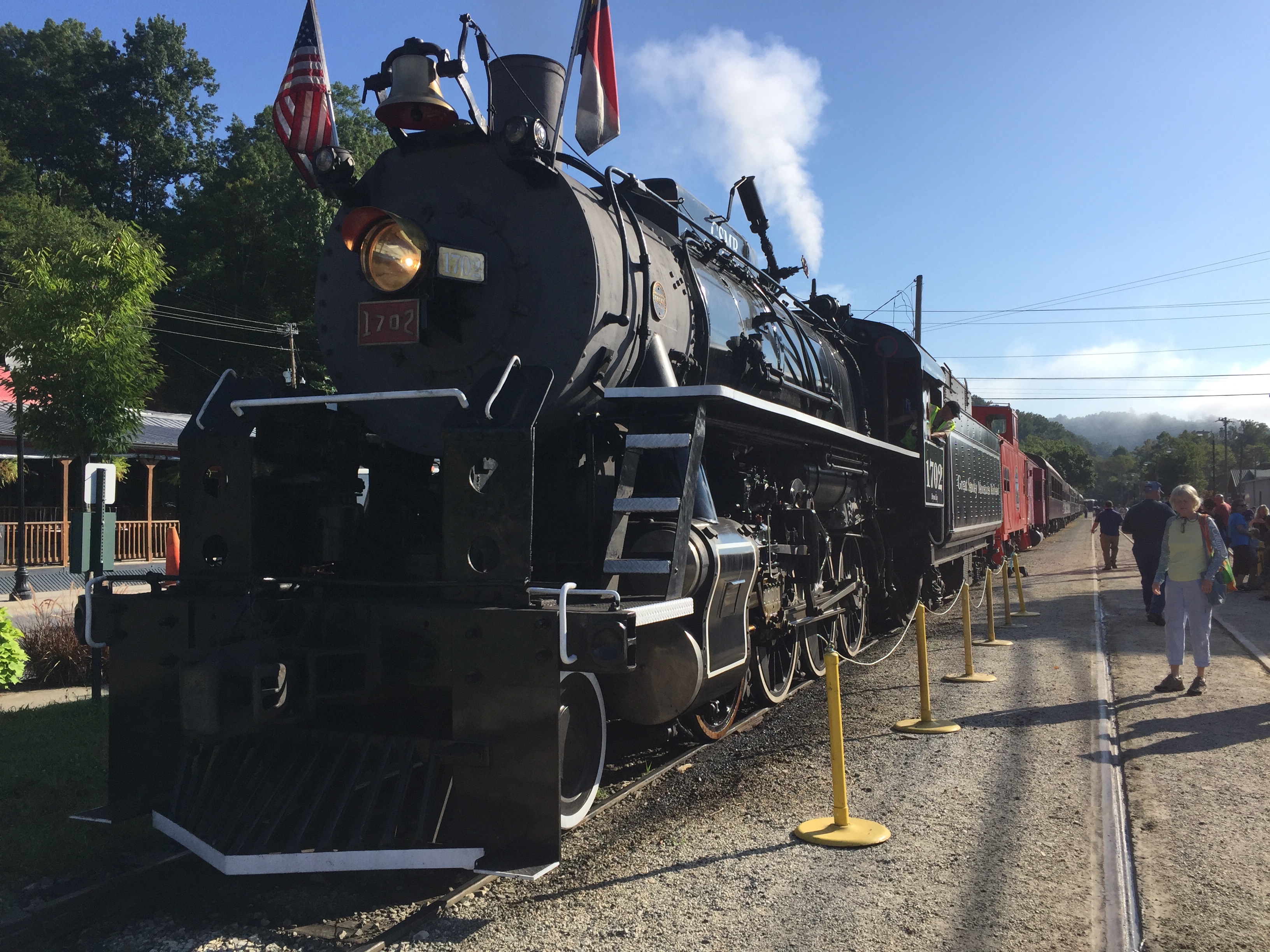
Oregon Railroad & Navigation 197 - Oregon Rail Heritage Center ( Portland, OR).
 Santa Fe 1316 - Texas State Railroad ( Palestine, TX). Tremont and Gulf 30/Magma Arizona 7 - Texas State Railroad ( Palestine, TX). 28 - Texas State Railroad ( Palestine, TX) Texas and Pacific 316 - Texas State Railroad ( Palestine, TX). Georgetown Loop 111 - Georgetown Loop Railroad ( Georgetown, CO). Georgetown Loop 40 - Georgetown Loop Railroad ( Georgetown, CO). Rio Grande K-37 class 493 - Durango and Silverton Narrow Gauge Railroad ( Durango, CO). Rio Grande K-36 class 489 - Cumbres and Toltec Scenic Railroad ( Chama, NM and Antonito, CO). Rio Grande K-36 class 480 - Durango and Silverton Narrow Gauge Railroad ( Durango, CO). Rio Grande K-28 class 473 - Durango and Silverton Narrow Gauge Railroad ( Durango, CO). White Pass & Yukon Route 73 - White Pass and Yukon Route ( Skagway, AK). White Pass & Yukon Route 69 - White Pass and Yukon Route ( Skagway, AK). Union Pacific 4014 - UP Heritage Fleet ( Cheyenne, WY). Union Pacific 3985 - UP Heritage Fleet ( Cheyenne, WY). Union Pacific 844 - UP Heritage Fleet ( Cheyenne, WY). Grand Canyon Railway 4960 - Grand Canyon Railway ( Williams, AZ). Grand Canyon Railway 29 - Grand Canyon Railway ( Williams, AZ). Great Smoky Mountains 1702 - Great Smoky Mountains Railroad ( Bryson City, NC). California Western 45 - California Western Railroad ( Fort Bragg, CA). Cowlitz, Chehalis & Cascade 15 - Chehalis-Centralia Railroad. McCloud Railway 25 - Oregon Coast Scenic Railroad ( Garibaldi, OR). (Polson Logging Co.) 2 - Mid-Continent Railway Museum
Santa Fe 1316 - Texas State Railroad ( Palestine, TX). Tremont and Gulf 30/Magma Arizona 7 - Texas State Railroad ( Palestine, TX). 28 - Texas State Railroad ( Palestine, TX) Texas and Pacific 316 - Texas State Railroad ( Palestine, TX). Georgetown Loop 111 - Georgetown Loop Railroad ( Georgetown, CO). Georgetown Loop 40 - Georgetown Loop Railroad ( Georgetown, CO). Rio Grande K-37 class 493 - Durango and Silverton Narrow Gauge Railroad ( Durango, CO). Rio Grande K-36 class 489 - Cumbres and Toltec Scenic Railroad ( Chama, NM and Antonito, CO). Rio Grande K-36 class 480 - Durango and Silverton Narrow Gauge Railroad ( Durango, CO). Rio Grande K-28 class 473 - Durango and Silverton Narrow Gauge Railroad ( Durango, CO). White Pass & Yukon Route 73 - White Pass and Yukon Route ( Skagway, AK). White Pass & Yukon Route 69 - White Pass and Yukon Route ( Skagway, AK). Union Pacific 4014 - UP Heritage Fleet ( Cheyenne, WY). Union Pacific 3985 - UP Heritage Fleet ( Cheyenne, WY). Union Pacific 844 - UP Heritage Fleet ( Cheyenne, WY). Grand Canyon Railway 4960 - Grand Canyon Railway ( Williams, AZ). Grand Canyon Railway 29 - Grand Canyon Railway ( Williams, AZ). Great Smoky Mountains 1702 - Great Smoky Mountains Railroad ( Bryson City, NC). California Western 45 - California Western Railroad ( Fort Bragg, CA). Cowlitz, Chehalis & Cascade 15 - Chehalis-Centralia Railroad. McCloud Railway 25 - Oregon Coast Scenic Railroad ( Garibaldi, OR). (Polson Logging Co.) 2 - Mid-Continent Railway Museum  Fillmore & Western 14 - Fillmore and Western Railroad. Alaska Railroad 557 - Engine 557 Restoration Company. Sierra Railway 28 - Part of Railtown 1897 State Historic Park. Sierra Railway 3 - Part of Railtown 1897 State Historic Park. NZR KA class - converted from coal 1947-53. NZR K class (1932) - converted from coal 1947-53. NZR JA class (North British-built locomotives only). GWR 4300 class (1 locomotive temporarily converted). GWR 4073 'Castle' class (5 locomotives temporarily converted). GWR 2884 class (8 locomotives temporarily converted).
Fillmore & Western 14 - Fillmore and Western Railroad. Alaska Railroad 557 - Engine 557 Restoration Company. Sierra Railway 28 - Part of Railtown 1897 State Historic Park. Sierra Railway 3 - Part of Railtown 1897 State Historic Park. NZR KA class - converted from coal 1947-53. NZR K class (1932) - converted from coal 1947-53. NZR JA class (North British-built locomotives only). GWR 4300 class (1 locomotive temporarily converted). GWR 4073 'Castle' class (5 locomotives temporarily converted). GWR 2884 class (8 locomotives temporarily converted).  GWR 2800 class (12 locomotives temporarily converted). A Parliamentary question was asked about it in 1919. James Holden's use of oil firing on the Great Eastern Railway is mentioned above and it was used sporadically on Britain's railways, usually because of coal shortages.
GWR 2800 class (12 locomotives temporarily converted). A Parliamentary question was asked about it in 1919. James Holden's use of oil firing on the Great Eastern Railway is mentioned above and it was used sporadically on Britain's railways, usually because of coal shortages. 
For a similar reason, the smokebox is sometimes painted with silver-coloured heat-resisting paint. The latter two changes are needed because oil firing produces higher temperatures than coal firing, and can cause rapid erosion of metal. shorter superheater elements are fitted.the lower part of the inner firebox is lined with firebrick.by a downdraft when entering a tunnel) the hot firebrick will re-ignite it the grate is covered with broken firebrick to act as a reservoir of heat.When a coal-burning steam locomotive is converted to burn oil, various modifications are usual: Some oil-burning engines were originally designed to be coal powered but were converted. In James Holden's system, steam was raised by burning coal before the oil fuel was turned on. Īn early pioneer of this form of engine was James Holden, of Britain's Great Eastern Railway. This is mechanically very different from diesel engines, which use internal combustion, although they are sometimes colloquially referred to as oil burners. The term is usually applied to a locomotive or ship engine that burns oil to heat water, to produce the steam which drives the pistons, or turbines, from which the power is derived. For other uses, see Oil burner (disambiguation).ĭarjeeling Himalayan Railway Locomotive No.787 after conversion to oil firing.Īn oil burner engine is a steam engine that uses oil as its fuel.








 0 kommentar(er)
0 kommentar(er)
